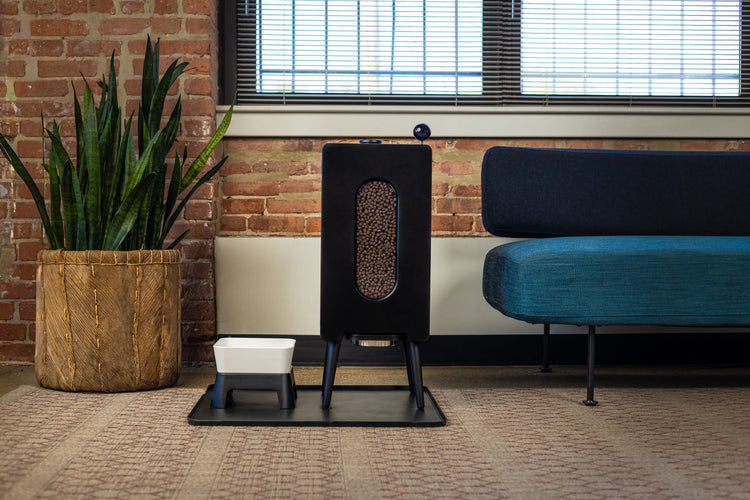Understanding Schipperke Temperament: The Spirited Companion
- Houndsy
Table of Contents
- Introduction
- The Schipperke Overview
- Temperament Traits
- Social Behavior
- Living with a Schipperke
- Conclusion
- Frequently Asked Questions
Introduction
Have you ever wondered what it would be like to have a dog with the energy of a dynamo packed into a compact, charming body? Enter the Schipperke, a breed known for its unique temperament and spirited personality. These little dogs, often described as "little captains," are not just adorable companions; they embody a vibrant mix of intelligence, curiosity, and a hint of mischief.
In this blog post, we’ll explore the Schipperke temperament in detail, helping you understand what makes these dogs tick and how to integrate them into your life. We’ll cover their energetic nature, trainability, social behavior, and suitability for different living situations. By the end, you’ll have a comprehensive understanding of the Schipperke temperament and how it can influence your daily life as a pet owner.
As we embark on this journey, we invite you to reflect on your own experiences with pets. Whether you’re a seasoned dog owner or considering welcoming a Schipperke into your family, understanding their temperament will help you nurture a harmonious relationship with these spirited companions.
The Schipperke Overview
A Brief History
The Schipperke is a breed with a rich history, originating in Belgium as a small version of the black sheepdog known as the Leauvenaar. Initially bred to guard canal boats, these lively dogs were skilled in hunting vermin, making them invaluable companions for tradesmen. The breed’s name translates to "little captain," a fitting title for a dog that has historically overseen its domain with an alert and vigilant attitude.
The Schipperke has maintained its popularity throughout the centuries, especially after being introduced to the upper classes in Europe, thanks to Queen Marie Henriette, who fell in love with the breed in the late 19th century. Today, the Schipperke is recognized for its spirited personality, loyalty, and adaptability to various living environments.
Physical Characteristics
Schipperkes are small yet sturdy dogs, typically weighing between 11 to 18 pounds and standing about 10 to 13 inches tall at the shoulder. Their distinct fox-like face, pricked ears, and thick double coat, often black, give them a unique appearance that is both charming and striking. Despite their compact size, Schipperkes carry a significant personality that often belies their physical stature.
Temperament Traits
High Energy and Playfulness
One of the standout features of the Schipperke temperament is their high energy level. These dogs are lively and curious, requiring regular physical activity to keep them happy and healthy. They thrive on exploration, making daily walks and playtime essential components of their routine. Engaging them in activities such as fetch or agility training not only keeps them physically fit but also mentally stimulated.
As energetic dogs, Schipperkes can be prone to boredom if not adequately exercised. This boredom can lead to undesirable behaviors, such as barking, chewing, or digging. Therefore, we must ensure that our Schipperke enjoys at least 30 minutes to an hour of vigorous exercise each day. Providing varied walking routes or engaging in new activities can help satisfy their inquisitive nature.
Intelligence and Training
Schipperkes are highly intelligent dogs, known for their quick learning abilities. However, their intelligence can also manifest as stubbornness, making training a challenge for novice owners. These little captains often want to have things their way, which can lead to a delightful but sometimes frustrating dynamic.
To effectively train a Schipperke, we must utilize positive reinforcement methods, such as treats, praise, and engaging play. Consistency is crucial, as these dogs respond best to structured routines and clear commands. Early socialization is also vital; exposing them to various environments, people, and other animals helps them develop into well-rounded companions.
Affectionate Yet Independent
While Schipperkes are known for their loyalty and affection towards their families, they also possess an independent streak. They enjoy being involved in family activities and thrive on companionship, often forming strong bonds with their human counterparts. However, they are not overly clingy and appreciate their space, allowing them to express their independence.
This temperament makes Schipperkes suitable for various living situations, from active families to individuals who appreciate a dog with personality. They can adapt well to different environments, including apartments, as long as they receive sufficient daily exercise.
Protective Nature
Schipperkes have a natural instinct to protect their homes and families. They are alert watchdogs, often barking to alert us to any unusual activity. This protective nature can be both a blessing and a challenge; while they make excellent guardians, they may also exhibit territorial behavior and bark excessively if not properly trained.
Proper socialization can help mitigate any unwanted aggression towards strangers or other animals. By introducing them to various people and situations, we can teach our Schipperke to discern between genuine threats and harmless visitors, fostering a more balanced behavior.
Social Behavior
Interaction with Family
Schipperkes are known for their affectionate nature, often becoming devoted companions to their families. They typically get along well with children and can be playful and gentle with them. However, supervising interactions between dogs and young children is essential to prevent accidental nips or rough play.
Their strong desire to be involved in family activities makes them great companions for active households. They thrive on interaction and require mental stimulation to prevent boredom, which can lead to destructive behaviors. By engaging in family games or outings, we can strengthen our bond with our Schipperke and ensure they feel like an integral part of the family.
Compatibility with Other Pets
While Schipperkes can coexist peacefully with other pets, their territorial nature can pose challenges. They may exhibit aggression towards unfamiliar dogs, particularly if they feel their territory is threatened. Socializing them with other animals from a young age can help them learn appropriate behaviors and reduce any tendencies towards aggression.
If we already have other pets, it’s essential to introduce them gradually and monitor their interactions. With patience and proper training, many Schipperkes can learn to coexist harmoniously with other dogs and even cats, particularly if raised together.
Living with a Schipperke
Space and Exercise Needs
Schipperkes are versatile dogs that can adapt to various living environments, including apartments, provided they receive enough exercise. They do not require a large yard, but a securely fenced space is crucial to prevent them from wandering or escaping. Their agile nature and curiosity can lead them to explore beyond their boundaries if given the opportunity.
Daily walks and play sessions are essential to keep their energy levels in check. Engaging in different activities, such as hiking or dog sports, can provide the necessary physical and mental stimulation they crave.
Grooming and Care
One of the appealing aspects of the Schipperke is its relatively low-maintenance grooming needs. Their thick double coat requires weekly brushing to minimize shedding, particularly during seasonal changes when they "blow coat." Regular baths are only necessary when they get dirty, making them a clean and manageable breed.
Maintaining their dental hygiene and nail care is equally important. Regularly brushing their teeth and trimming their nails will help keep them healthy and comfortable.
Conclusion
Understanding the Schipperke temperament is essential for anyone considering adding this vibrant breed to their family. With their high energy, intelligence, protective nature, and affectionate demeanor, Schipperkes can make incredible companions. However, they require proper training, socialization, and daily exercise to thrive.
By being mindful of their needs and providing a stimulating environment, we can cultivate a rewarding relationship with our Schipperkes, filled with joy, laughter, and endless adventures. As you reflect on your own pet care routines, consider how the Schipperke’s spirited personality would fit into your lifestyle.
If you're ready to elevate your dog-feeding experience with the perfect blend of form and function, explore the Houndsy Kibble Dispenser. Designed with innovative features that cater to both you and your pet, it's the ideal solution for a seamless feeding routine.
Frequently Asked Questions
What is the typical lifespan of a Schipperke?
The average lifespan of a Schipperke is around 12 to 16 years, depending on their overall health, genetics, and care.
Are Schipperkes good with children?
Yes, Schipperkes are generally good with children and can be playful and affectionate. However, supervision is essential to ensure safe interactions.
How much exercise do Schipperkes need?
Schipperkes require at least 30 minutes to an hour of vigorous exercise daily. Engaging in various activities helps keep them physically and mentally stimulated.
Are Schipperkes easy to train?
Schipperkes are intelligent and capable of learning commands quickly, but they can also be stubborn. Consistent training using positive reinforcement methods is essential for success.
Do Schipperkes shed a lot?
While Schipperkes do shed, regular brushing can help manage their coat and minimize the amount of fur in your home. They typically experience heavier shedding during seasonal changes.












